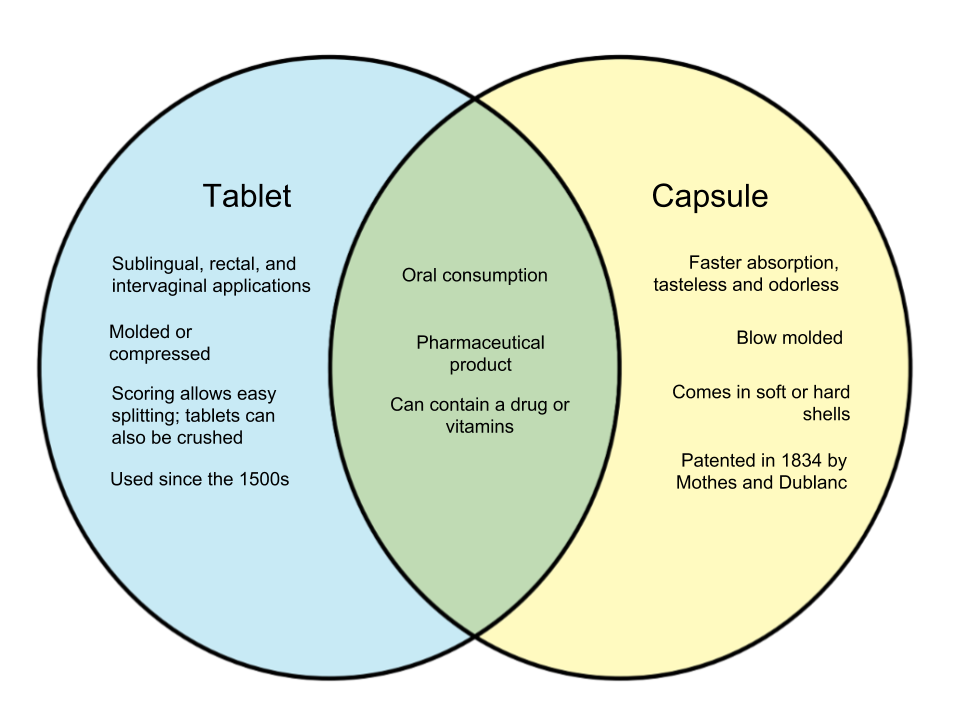Difference between Capsules and Tablets
From diff.wiki
Nowadays, modern technology has made it possible for people to take their medication or supplements in different manners or methods. A few examples of these are suspensions, syrups, drops, tablets A capsule is a shell used to encapsulate medicine - they either come as soft or hard-shelled. Capsules can come in different colors and sizes, although they cannot be cut or crushed like tablets. They also generally cost more. Capsules are made using animal protein or gelling agents, as well as plasticizers and coloring agents.
| Tablets | Capsules | |
|---|---|---|
| Definition | A flat oral pharmaceutical dosage item that is usually in compressed powder form | A shell or container containing a drug or vitamins |
| Methods of administration | Oral, sublingual, rectal, intervaginal | Oral |
| Appearance | Flat, compressed powder, comes in different shapes and sizes | Shiny, comes in different sizes and colors; can be soft or hard-shelled |
| Processing method | Molding or compression | Use of animal proteins or gelling agents to contain medicine, using the process of extrusion and spheronization or blow molding |
| Can it be cut? | Yes | No, can be opened |
| Can it be crushed? | Yes | No |
| History | Used in the 1500s in ancient Egypt | Patented in 1834 by Mothes and Dublanc |
| Advantages | Different sizes and shapes, scoring allows convenient splitting, low costs, widely accepted | Sealed capsules serves as good oxygen barriers, protection of sensitive ingredients, odorless, tasteless, easy to take, absorbed easily, reduces gastrointestinal irritation |
| Disadvantages | Risk of sensitivity on coatings, processing can add heat or moisture and affect contents, possibility of poor disintegration in gastrointestinal tract | Can be too large, possibility of ingredients interacting inside, limited fill weight, costs more |

